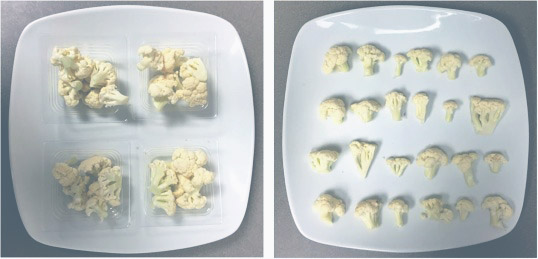Not eating your fruits and vegetables can have serious health consequences, from obesity to macular degeneration. And many Americans, even those who have easy access to these healthy foods, stubbornly resist eating them.
Now, researchers at the University of Georgia have examined the psychology of how vegetables are presented and served, and how this affects consumption.
Previous research shows that people consume less of a particular food if it’s packaged separately in a smaller portion. For example, serving separately wrapped chocolates generally reduces consumption by making the eater more aware of the amount.
“For chocolates, people need to inhibit the desire to eat more. Each decision point offers a reminder that they should stop, and so increasing the decision points actually decreases consumption,” said Michelle vanDellen, associate professor in the Franklin College of Arts and Sciences department of psychology and lead author on the paper.
However, researchers posited that offering relatively less-appealing foods (like vegetables and other low-fat, low-sugar foods) in separate units might have the opposite effect and increase consumption.
“People need to initiate self-control to consume vegetables. More decision points might require more initiation. Separating food into a unit might reduce decision points. Because people also have an intrinsic desire for completion, they may be more likely to finish a unit or serving, even if these are made of relatively unappealing options,” vanDellen said.
The team conducted experiments in which they randomly presented cauliflower both in whole presentation formats (all pieces on one plate) or a partitioned presentation format and measured consumption. Overall, people didn’t eat different total amounts of cauliflower across the conditions. But they did find that the presentation format affected consumption.
In the whole presentation format, most participants only ate one piece of cauliflower. In the partitioned format, participants were less likely to stop at one piece and more likely to eat a whole serving (either four or six pieces depending on the study).
Co-authors on the study include Janani Rajbhandari-Thapa, assistant professor of health policy and management in the UGA College of Public Health, and Julio Sevilla, associate professor in the UGA Terry College of Business department of marketing.
“While past findings have shown that partitions can help curve the consumption of highly tempting, unhealthy foods, as a result of enhanced self-monitoring, our work provides support for another benefit of using partitions,” Sevilla said. “Interestingly, partitions can help increase the consumption of healthy items, such as vegetables, as they nudge consumers to finish what they started.”
“This study is a true outcome of interdisciplinary collaboration,” said Rajbhandari-Thapa. “The findings inform how a subtle change in vegetable presentation can influence consumption behavior. The result can inform nudging and choice architecture intervention in cafeteria settings to encourage vegetable consumption.”
The paper is published in the journal Food Quality and Preference.




